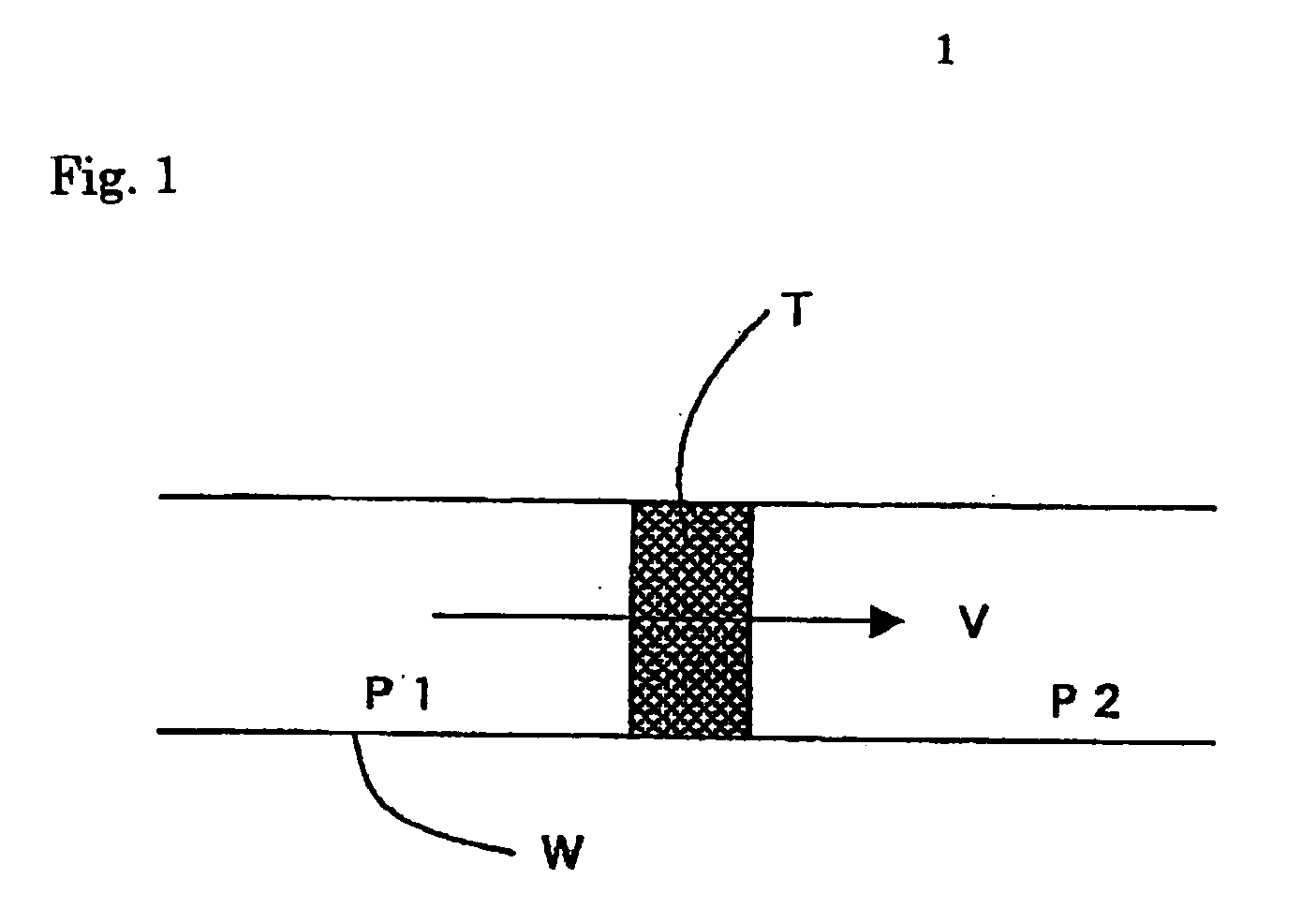Flame-retardant sheet and formed article therefrom
a technology of flame-retardant sheets and formed articles, which is applied in the direction of synthetic resin layered products, transportation and packaging, chemistry apparatus and processes, etc., can solve the problem that the flame-retardant cannot, however, guarantee an adequate fire-retardant, and achieve excellent fire-retardant performance and no toxic
- Summary
- Abstract
- Description
- Claims
- Application Information
AI Technical Summary
Benefits of technology
Problems solved by technology
Method used
Image
Examples
example 1
[0091] A fiber sheet (unit weight: 500 g / m2, thickness: 15 mm) was manufactured by the needle punching method, using a fiber web containing 80% by mass of polyester fiber (fiber fineness: 12 dtex fiver length : 52 mm) and 20% by mass of low-melting point polyester fiber (softening point: 110° C., fiber fineness: 8 dtex, fiber length : 54 mm). A treatment solution was prepared by adding and mixing 20 parts by mass of expandable graphite (expansion start temperature 300 to 320° C., expansion rate: 100 times) to 80 parts by mass of phenol-formaldehyde precondensation polymer (solid content 50% by mass). The viscosity of said treatment solution was 100 mPa·s.
[0092] Said treatment solution was impregnated into said fiber sheet in an amount of 50% by mass solid content, after which said fiber sheet into which said treatment solution was impregnated, was then dried in a drying chamber with decompression, at 100 to 120° C. for 3 minutes, to precure said fiber sheet. Said precured fiber she...
example 2
[0093] A treatment solution was prepared by adding and mixing 20 parts by mass of polyvinylalcohol water solution (10% by mass of solid content, saponification degree 98.5 mol %) and 20 parts by mass of expandable graphite (expansion start temperature : 300 to 320° C., expansion rate, 100 times) into 60 parts by mass of phenol formaldehyde precondensation polymer (50% by weight solid content). The viscosity of said treatment solution was 250 mPa·s. Using said treatment solution, a molded fiber sheet having a thickness of 10 mm was manufactured in the same manner as EXAMPLE 1. The ventilation resistance of the resulting molded fiber sheet was measured using the same tester as used in EXAMPLE 1 was 4.1 kPa·s / m.
example 3
[0094] A treatment solution was prepared by adding and mixing 15 parts by mass of polyvinyl alcohol water solution (10% by mass solid content, saponification degree 98.5 mol %), 4parts by mass of PRIMAL, ASE-60 (Rohm and Haas Co., Trade Name) which is an emulsion of slightly cross-linked ethyl acrylate-methacrylic acid copolymer as an alkali soluble thickener, 20 parts by mass of expandable graphite (expansion start temperature: 300 to 320° C., expansion rate: 130 times), and 1 part by mass of ammonia water (27% by mass) into 60 parts by mass of phenol-folmaldehyde precondensation polymer water solution (50% by mass solid content). The viscosity of the resulting treatment solution was 950 mPa·s / m.
[0095] By using said treatment solution, a molded fiber sheet (thickness 10 mm) was manufactured in the same manner as EXAMPLE 1. The ventilation resistance of the resulting molded fiber sheet was measured using the same tester as used in EXAMPLE 1 was 4.6 kPa·s / m.
PUM
 Login to View More
Login to View More Abstract
Description
Claims
Application Information
 Login to View More
Login to View More - R&D
- Intellectual Property
- Life Sciences
- Materials
- Tech Scout
- Unparalleled Data Quality
- Higher Quality Content
- 60% Fewer Hallucinations
Browse by: Latest US Patents, China's latest patents, Technical Efficacy Thesaurus, Application Domain, Technology Topic, Popular Technical Reports.
© 2025 PatSnap. All rights reserved.Legal|Privacy policy|Modern Slavery Act Transparency Statement|Sitemap|About US| Contact US: help@patsnap.com

